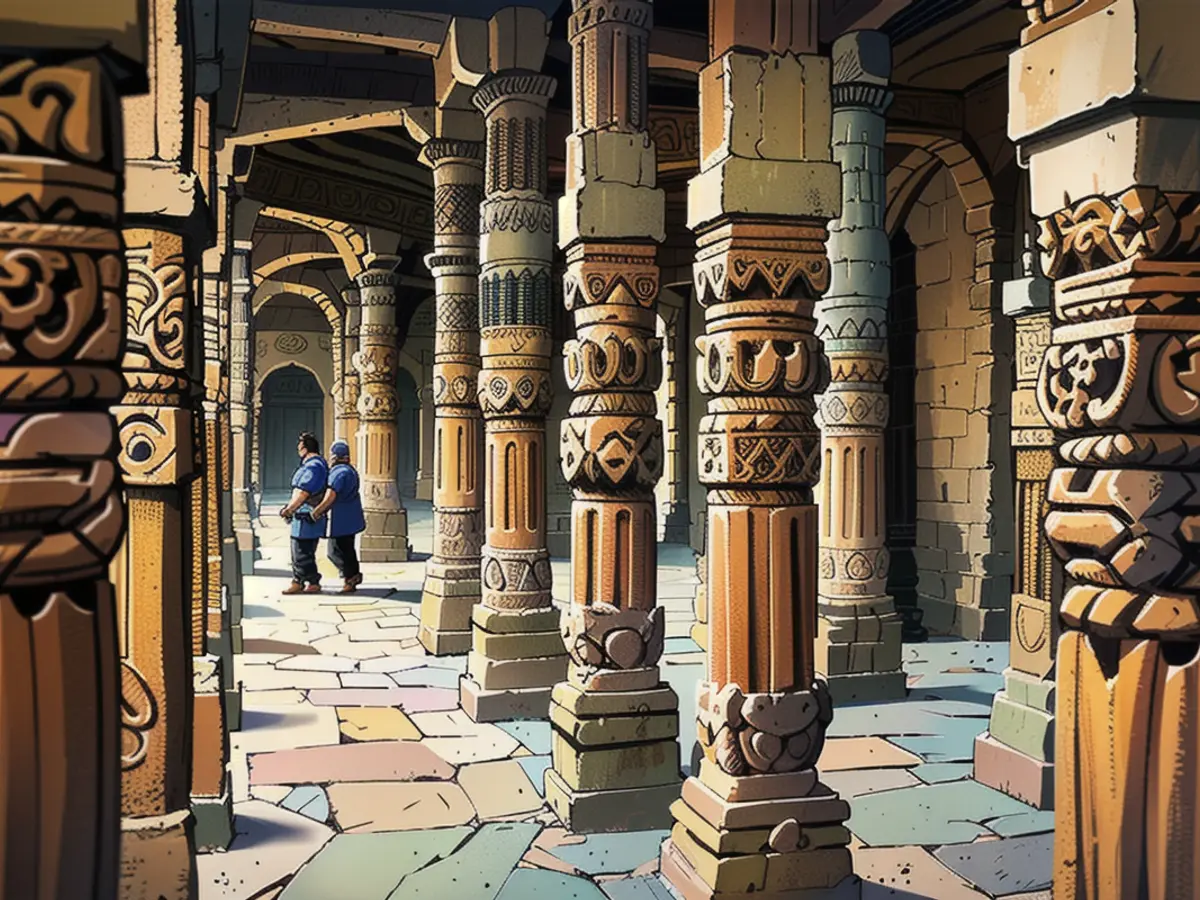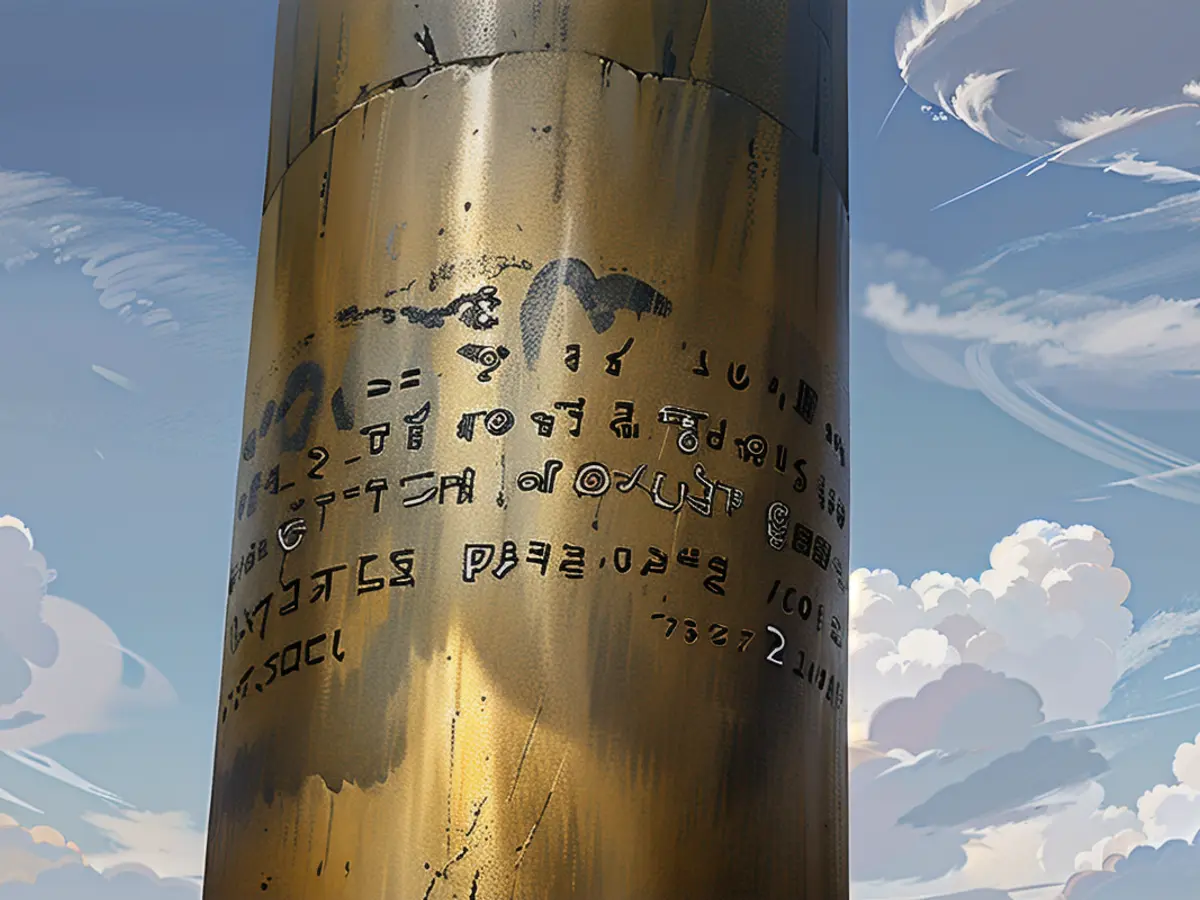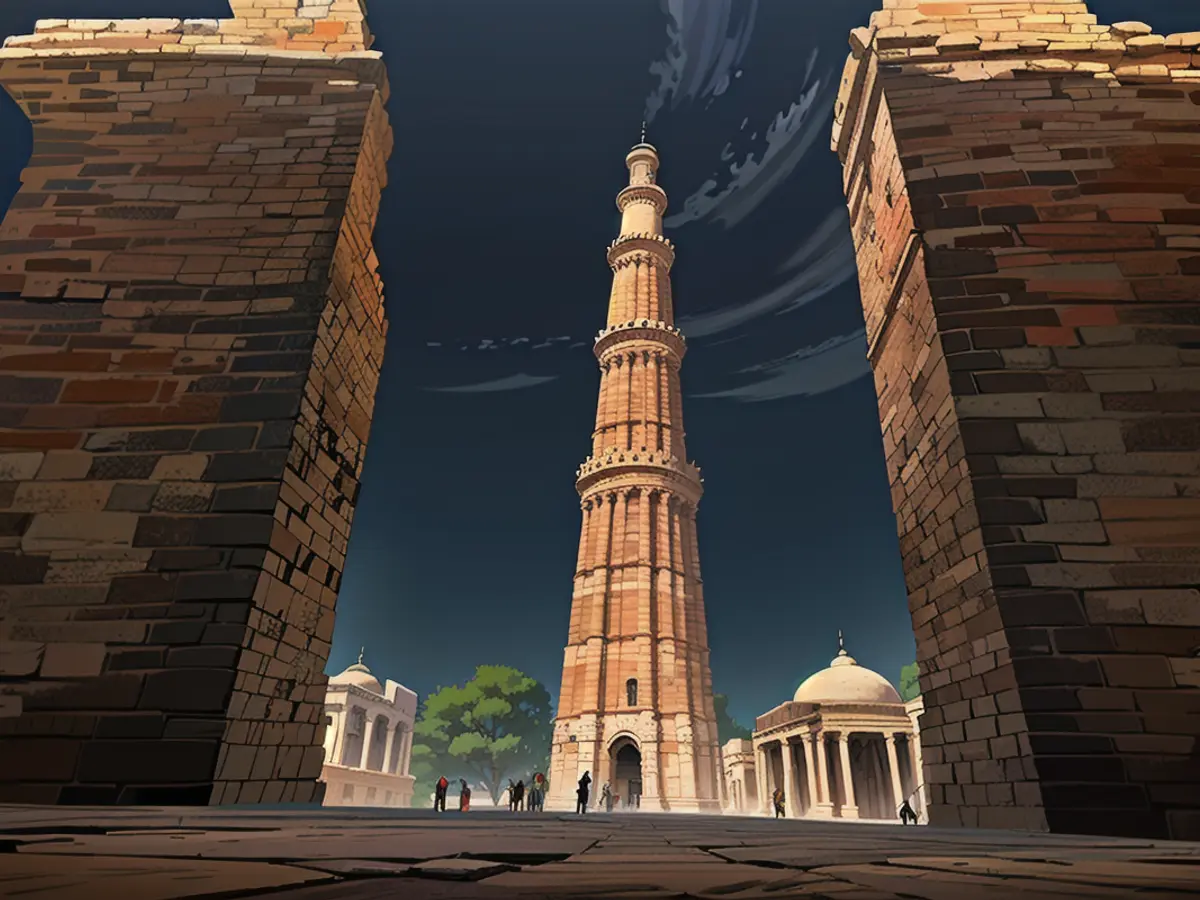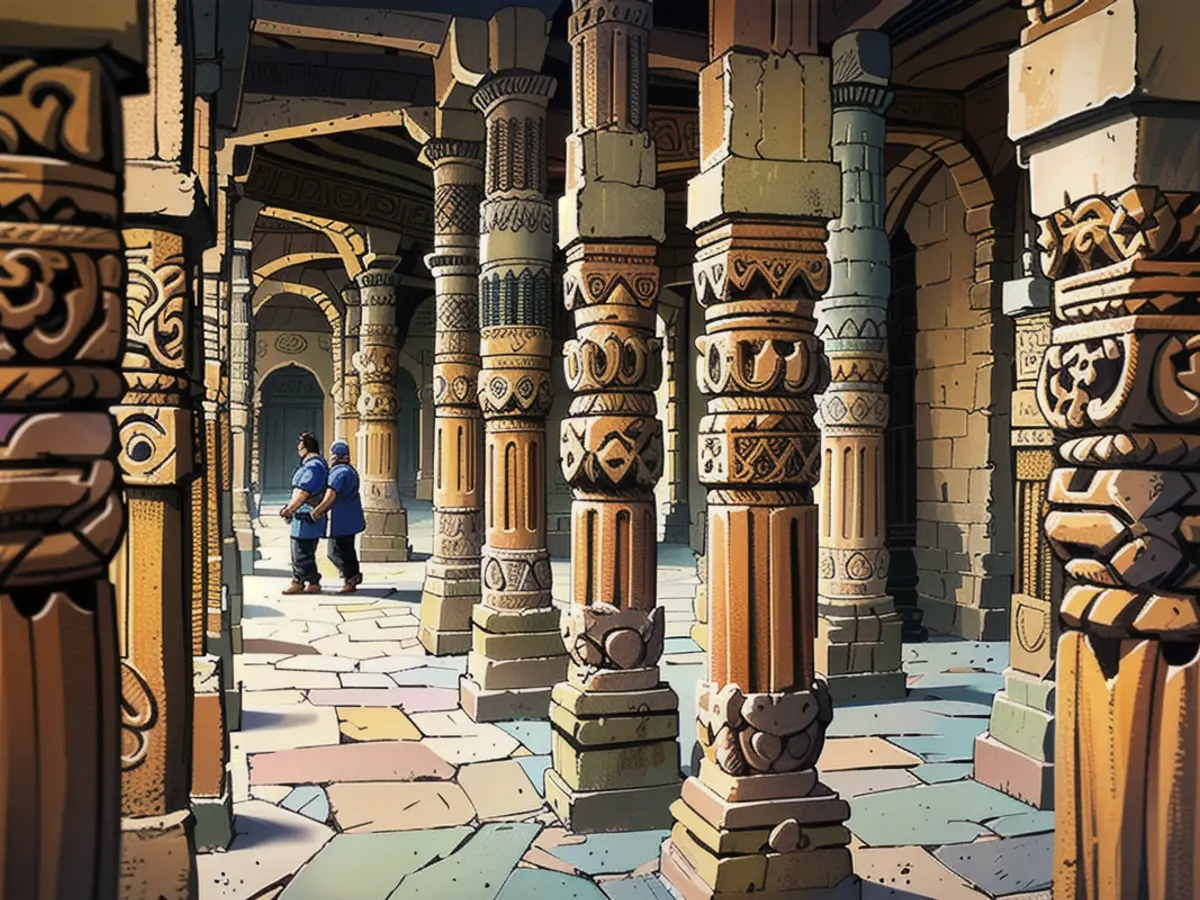The enigmatic iron pillar in India has withstood the elements for a stunning 1,600 years without the slightest hint of rust formation.
A surprising discovery rests within New Delhi's UNESCO-protected historical complex, Qutb Minar: a mere pillar, seemingly impervious to time. Despite its presumed lack of modern technology, this old relic stands as testament to a strange phenomenon.
Nestled within the courtyard of the centuries-old Quwwat-ul-Islam Mosque in Mehrauli district, you'll find a 7.2-meter pillar weighing six tons, made entirely of iron and coincidentally older than the complex. Incredibly, it remains unscathed by age and environmental wear, even withstanding Delhi's scorching temperatures and pollution.
This impression-inducing feat initiated scientific curiosity, having first captured the attention of researchers in 1912. They attempted to understand how this old piece of metal could stay so pristine.
Fast forward to 2003, and scientists at India's prestigious Indian Institute of Technology in Kanpur manage to uncover the secrets behind this ancient metal's resilience. The pillar's unique composition; primarily made of wrought iron, extremely high phosphorus content (approximately 1%) supported by an unusual lack of sulfur and magnesium, set it apart from ordinary modern iron.
These findings were further substantiated by an uncommon technique utilized by ancient craftsmen referred to as "forge-welding." It involves heating and hammering the iron, an approach unlike that used today which would've kept that high phosphorus content intact.
R. Balasubramaniam, an archeo-metallurgist, explained this practice in a report for Current Science, crediting it for the pillar's remarkable strength. He also highlighted the presence of a layer known as "misawite," a combo of iron, oxygen, and hydrogen that forms on the pillar's surface due to its high phosphorus content and absence of lime, providing increased durability.

Balasubramaniam marveled at the craftsmanship of the ancient metallurgists, deeming the pillar a "living testament" of India's ancient metallurgical prowess.
The pillar's longevity is not only celebrated for its unique material properties but also for its mythological connections. Some believe it originated from the Gupta Era around the 4th and 5th centuries during the reign of Chandragupta II, also known as Vikramaditya. This theory posits that it was originally installed in the Varah Temple of Udayagiri Caves, used as a victory monument honoring the Hindu deity Lord Vishnu. Its top bore a Garuda statue, but that too faded through time.
Another theory proposes that during the reign of Varāhamihira, a celebrated astronomer in Vikramaditya's court, purchased the pillar for use in his astronomical studies before moving to Mehrauli - where he established an observatory - bringing the pillar along for continued use.
Many historical references attribute the pillar's movement to significant figures such as Raja Anangpal of the Tomar dynasty and Muslim rulers like Iltutmish and Qutbuddin Aibek.
Interestingly, it's not just its metallurgical significance that mesmerizes us. The legend behind this unassuming piece of metal is as captivating as its structure. The Iron Pillar stands today as a marvel, marking a point in history where science, mythology, and culture entwine.

Today, the pillar's enduring symbolism has made it the symbol of institutions like the National Metallurgical Laboratory and the Indian Institute of Metals.
In conclusion, the Qutub Minar's Iron Pillar isn't just a symbol of ancient Indian craftsmanship but also serves as a testimony to an era intertwined with science, myth, and vibrant historical accounts. It truly showcases the fascinating mysteries that lie hidden within the walls of our ancient architectural marvels.
Raso narrates an incident about Raja Anangpal attempting to remove a nail from a pillar, despite warnings from Brahmins of catastrophic outcomes. When the nail was extracted, its red base was believed to be Sheshnag's blood, triggering a wave of fear regarding the Earth's destruction. Anangpal hastily ordered its reinstallation, but this was done improperly, which caused the pillar to become loose. It's thought that this incident might've given rise to the term "Dilli" for Delhi – a term that is a play on the Hindi word "dhilli," which denotes "loose."
This tale showcases the cultural significance attached to a seemingly inconsequential relic. Additionally, the efforts made to preserve it are noteworthy, with a protective fence installed by the Archeological Survey of India. However, some concern about the amount of human interaction with the pillar still exists, as it bears both historic and spiritual value.
Conservation architect and heritage expert, Pragya Nagar, praises the remarkable preservation of the pillar amidst its historical context. She further adds that upcoming technologies and techniques have the potential to learn from these ancient materials, which could open avenues for more sustainable alternatives, thereby addressing the environmental damage associated with the process of metal extraction. Nagar emphasizes the importance of approaching history not just as a collection of relics to be conserved, but primarily as knowledge repositories and holders of indigenous practices, paving the way towards a more conscious future.

Read also:
- Fear of escalation in the Middle East: US Secretary of State Blinken travels to the region again
- Government circles: US Secretary of State Blinken to travel to Middle East again
- Bridging days 2024: How you can double your vacation this year
- Germany has wanderlust: how tour operators and airlines are looking ahead to the next travel year
After delving into the intriguing story of the iron pillar's resilience, researcher interest was rekindled in 21st-century travel.
This remarkable discovery has since inspired many modern scientists to plan trips to India, hoping to study the pillar further and uncover more secrets about its enduring strength.
Source: edition.cnn.com








